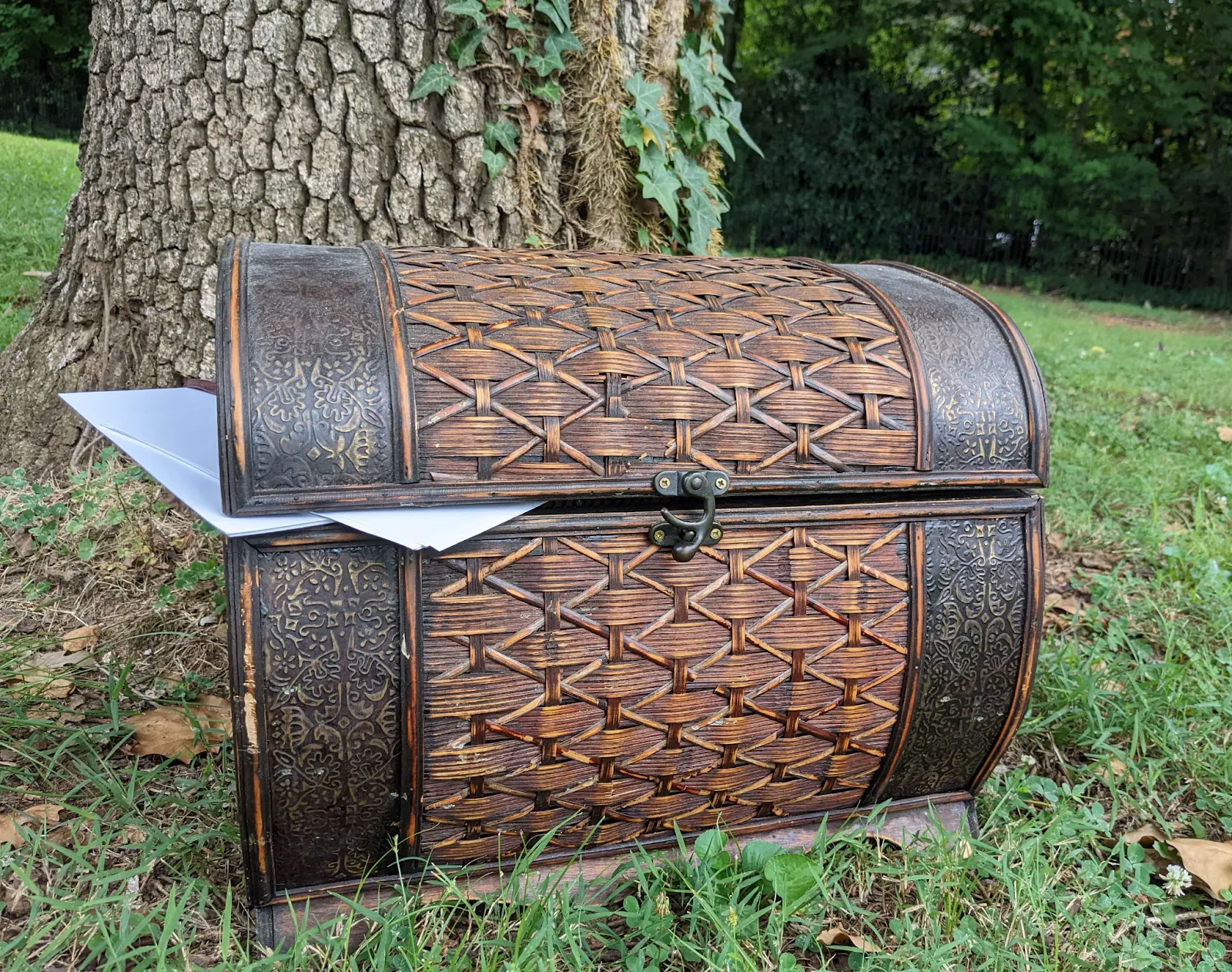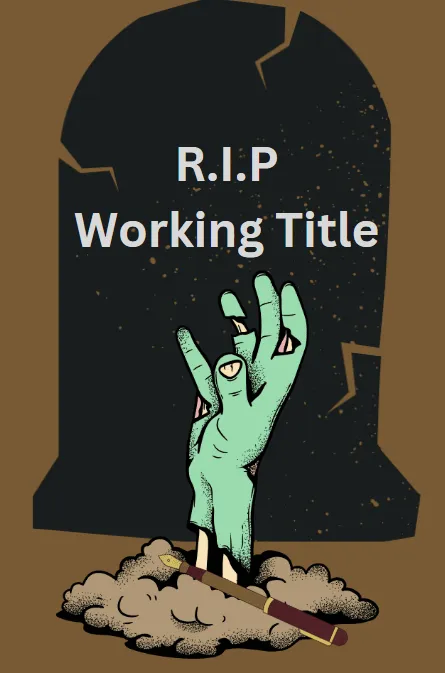Trunk Novels: the writer's forgotten children
S.R. Beaston
Crafty with words, wit, and wisdom, just add caffeine to make it more interesting.
As a writer, I’ve had more than one piece of work loom over my shoulder, guilting me as I start a new writing project.
My first novel started when I was 14, a great premise about elves in a forest, where humans were thought to be only a legend, extinct. Then someone told me to watch Ferngully, and I got so disheartened that my idea was unoriginal, so I abandoned it.
Fast forward to around 2012, where I put aside my large book of 60+ terrible poems and started on my ‘serious’ novel. I had revised the first 10 chapters seven times and even sent them to an editor. I had only vaguely written the following 4 chapters, and had never reached the end. After 10 years of battling it, I abandoned that one, too.
I kept saying I wasted time, that years of my life and writing career were for nothing. I didn’t realize the wealth of knowledge I was gaining by just writing.
Be it files on a computer, scribbles in a notebook, or printed pages in a box, these works can hold just as much value as the piece you finally release. They are called trunk novels.
What is a trunk novel?
A trunk novel is any novel (or piece of writing) that is no longer being worked on. Sometimes these novels will be revisited. More often than not, they linger in the void of a save file under an obscure name or loose papers shoved in an actual trunk, never to be seen with a writer's eye again.

Is a trunk novel good or bad?
‘Trunk novel’ has a weird negative connotation to it, depending on who you are talking to. To some, it means you’ve given up. Some find the term ‘trunk novel’ offensive to their time and work.
Others see it as a way of the writer's life. It either happens to us unwillingly, or we actively work on a trunk novel for the experience of writing.
Maybe you aren’t telling the right story at the right time. Even if you are actively working on a novel that you don't intend for others to see, that doesn’t mean it will always be the case. It means you have a structured story in some state that you may find interest in later, once you’ve developed your craft.
I believe, despite the connotations, trunk novels can be used for good. It’s all in the mindset you choose to have.
The tools in a trunk novel
Trunk novels can be helpful for any ambitious writer. Believe it or not, there are hidden benefits to hidden works. If you can shelf the guilt and frustration of ‘wasted time and energy’, you can take away a lot more from the experience than the negativity it often comes with.
Here are a few treasures you can find in your trunk novel.
It’s practice, plain and simple
Trunk novels are often your first attempts. Writing is hard, and novels take that difficulty up to the highest level. No one can teach you how you write, but that means you have to play the game of trial and error.
I didn’t know my writing process when I was 14. I didn’t outline. I didn’t consider the point of view. I never conceived an ending to any story. I could write pretty prose and make decent ideas, but that alone does not make a novel.
Now, three novels in, I’ve passed every milestone I couldn’t reach before, having the experience and know-how to write without many of the pitfalls you hit when you first start out. I can take what I’ve worked so hard to master and apply it to a story I so strongly believe in.
In a short list, this is what I’ve personally learned from my trunk novels:
- How to write multiple POV’s
- How to not splice scenes
- How to outline
- How to complete a first draft
- How to find my ‘writer’s voice’
- How to “kill your darlings”, be it characters or entire scenes
- How I personally handle self-imposed deadlines
- How to handle criticism and rejection
I also learned a lot about myself as a person. There’s a lot of discipline and willpower needed in a writing career, and being honest about where you are on that journey is extremely important.
Practice doesn’t make perfect, but it makes it easier to strive for completion. I’d never written ‘The End’ on a manuscript before this latest novel, and if it wasn’t for my trunk novels, I likely wouldn’t have.

You have content at your fingertips
Nothing says you can’t use items from your trunk novels in other works! Your words, scenes, and ideas will always be yours to use as you see fit.
Consider trunk novels as a backlog of information that you can lift from and apply.
TIP: If you borrow from a trunk novel, consider making an annotation in the document that you've done so. You may want to avoid accidentally reusing a scene, character, or other element in the future.
Trunk novels can be revitalized
Having a trunk novel (or a few) doesn’t mean they’ll never see the light of day again. It can be the case more often than not, but nothing is stopping you from taking that novel out of its trunk and trying again.
Be it simple inexperience or a lack of maturity and knowledge, some stories are too ambitious for the ‘you’ that you are currently. That’s completely okay! No one wants to publish half-baked work.
With enough time passed, it’s fun to visit these long-deserted ideas. Sometimes, revisiting these trunk novels is all you need for fuel to be added to a dying flame.

For me, I fully intend to revisit my novels, maybe when the ‘Fae’ trend has died down for a couple years...
Like what you're reading?
Join other authors like you in NovelPad’s free writing community!
Join the communitySimilar Posts
What File Formats are Accepted by Kindle Direct Publishing?
File types for ebooks, paperbacks, and hardbacks on Amazon's KDP.
Ollie Ander
Is probably just a couple cats in a trench-coat—the hair shedding and sunlight napping are highly suspect.
The Writer’s Resolution Guide 2024
Goal ideas and strategies for your new writing year.
Sage Kay
Writer, reader, outfit repeater.
How long is a fantasy book? Words, pages, chapters, scenes, & prologues
What should wordcount goals look like for a fantasy novel?
S.R. Beaston
Crafty with words, wit, and wisdom, just add caffeine to make it more interesting.
What’s the Difference Between a Novel and Novella?
What distinguishes the novel from the novella?
Ollie Ander
Is probably just a couple cats in a trench-coat—the hair shedding and sunlight napping are highly suspect.
How to Stay Motivated for NaNoWriMo + Free Printable 2023 Writing Calendar
Feeling that mid-NaNoWriMo sluggishness? Grab some motivation tips!
Bella Rose Emmorey
book editor, rogue behaviorist, digital marketer, writer, brand builder, plant aunt, and cheese enthusiast.
How long is a Science Fiction Book?
How many words, chapters, and pages should be in your sci-fi novel?
Ollie Ander
Is probably just a couple cats in a trench-coat—the hair shedding and sunlight napping are highly suspect.